I’ve been spinning some very pretty merino-silk by Passe-Partout. It has bits of pink, silver, white, blue… a lovely light combination.
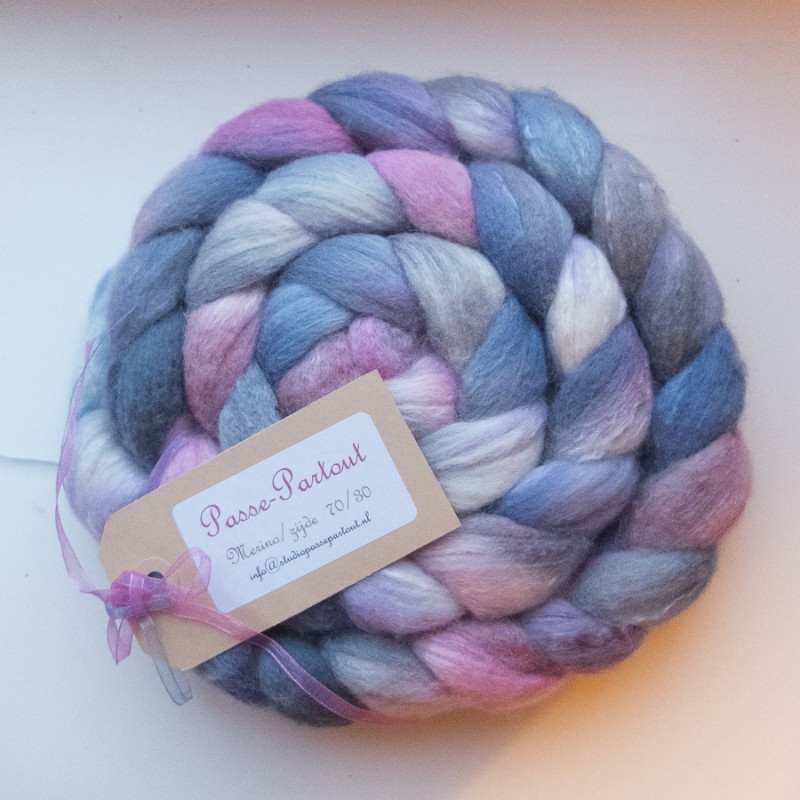
Before I started spinning, I first made this braid into rolags, because the fibres had compacted a bit (and spinning is a bit harder then). I took care to follow the colours of the roving as they appeared.
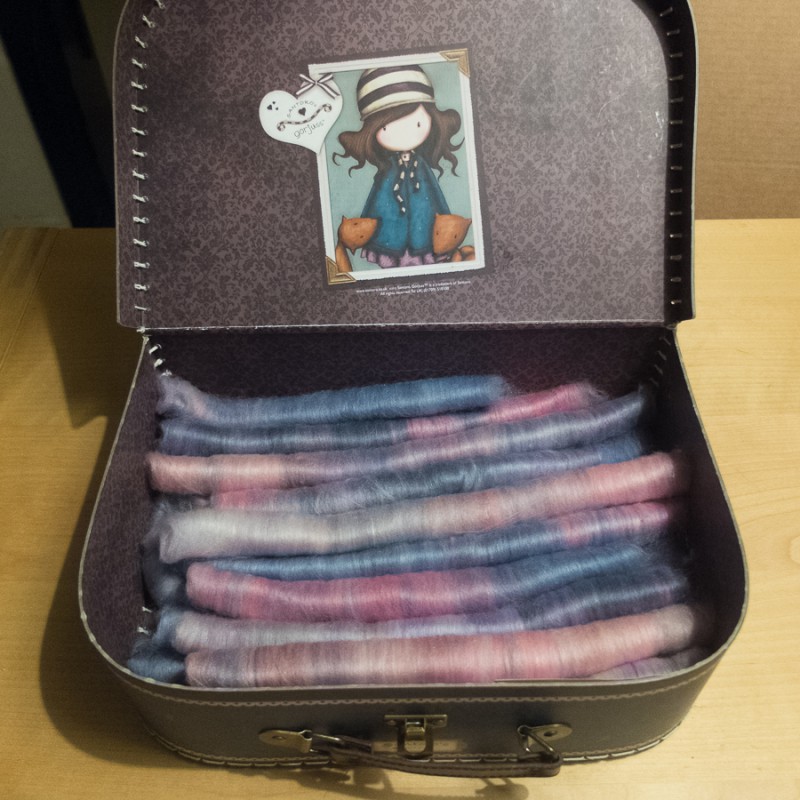
Then I spun them on my spindles, in order. A couple of days ago I was finished!
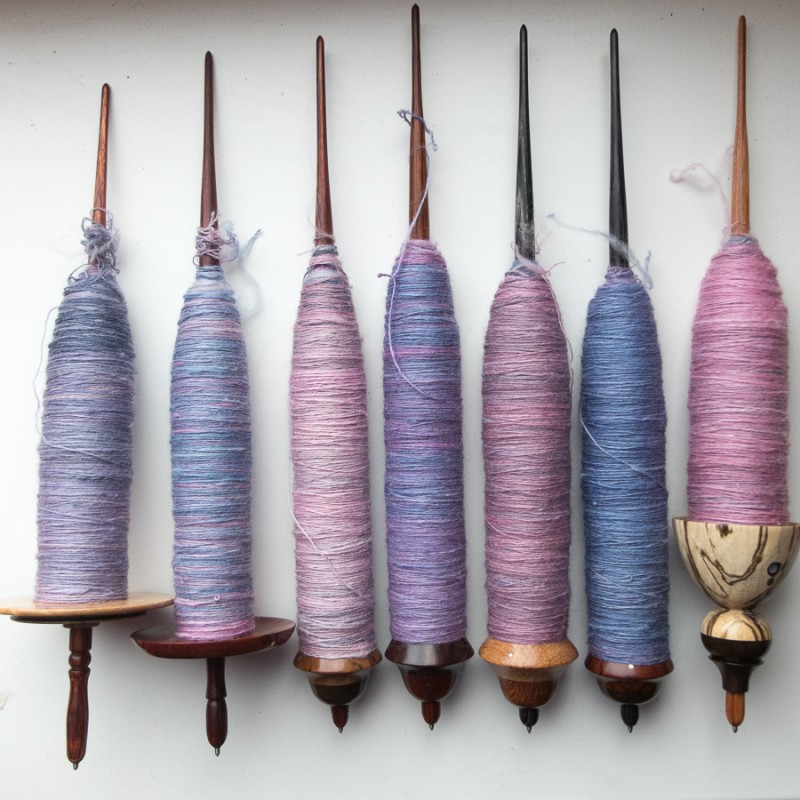
I wound the singles into a cake and started n-plying, because I wanted to keep the colour changes. However, the singles were quite thin and the n-plied yarn was still about lace weight. So after a short bit I decided to make a 4-ply instead!
That would mean, however, that I would have to give up on keeping the colours separate.
I was a bit worried about what the result may look like. To make the 4-ply, I rewound the yarn into a new cake doubled (working from both ends of the first cake). Then I held the two double ends of the second cake together for plying.
The colours mixed quite randomly. There were some places where all four strands had the same colour for a little while, but most of the time at least one of the strands had a different colour from the rest. I was concerned: would the yarn look muddy? I could not really judge it because it was evening and there was no daylight left.
Today when I got up, the first thing I did was to go check the yarn in the daylight. Would the mixed colours have produced something boring?
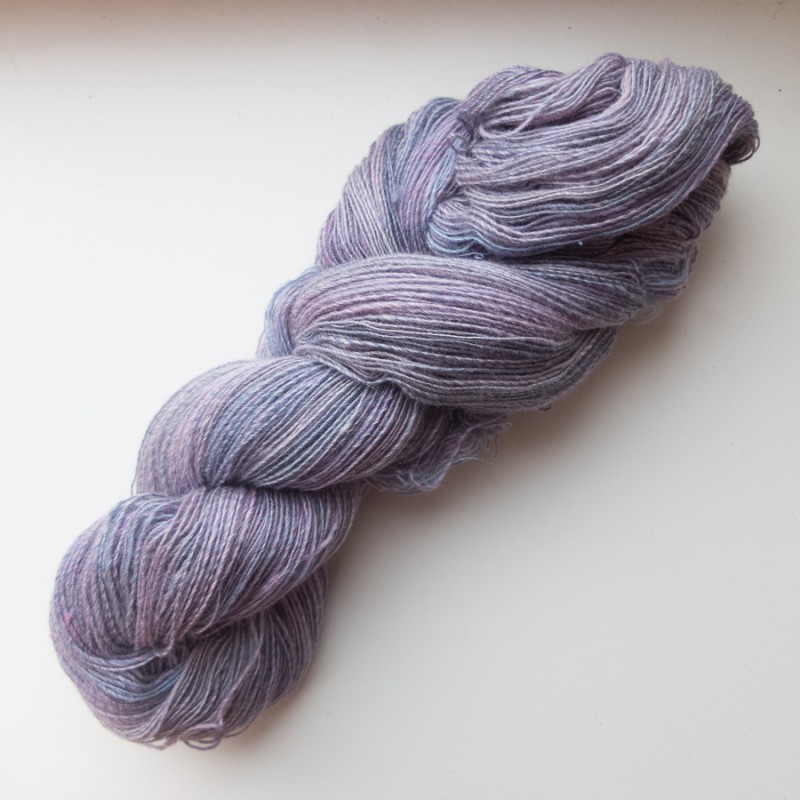
The overall look was a semi-solid lilac, and it was a bit shiny (because of the silk). Upon closer inspection you can still see the separate colours though:
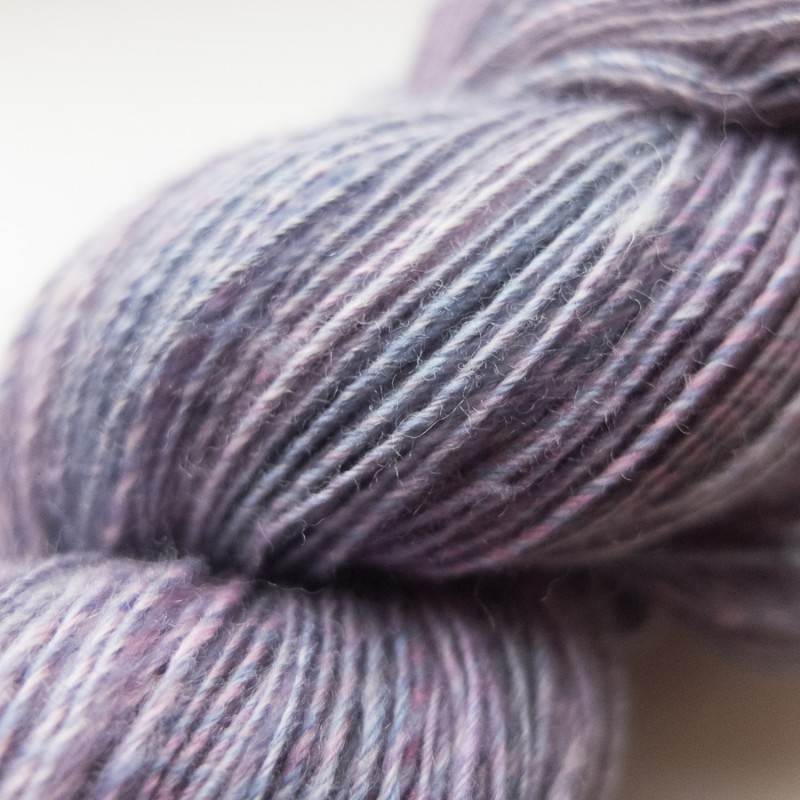
I like the result! The colours are still distinguishable, but the overall look is quite harmonious. I think it will knit up nicely too! I love it when colours (and textures) work well but differently on different levels of focus.